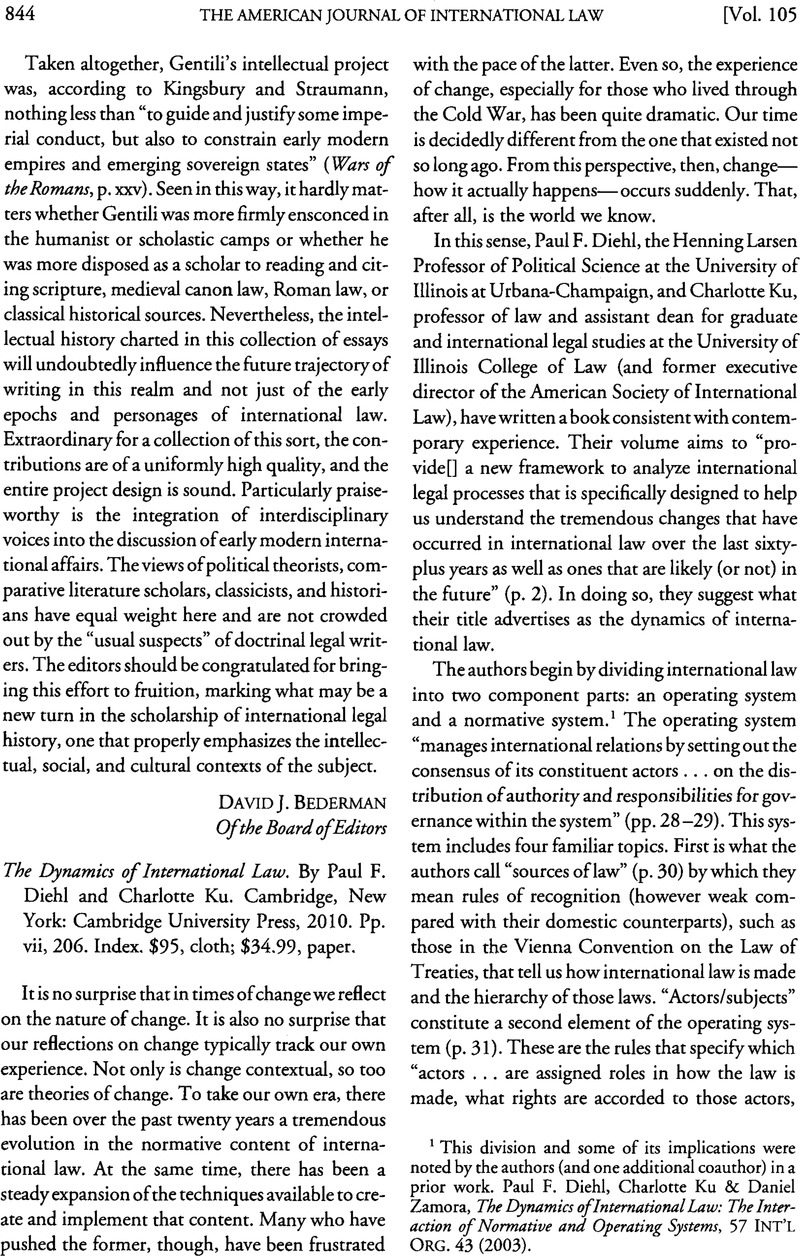No CrossRef data available.
Published online by Cambridge University Press: 02 March 2017

1 This division and some of its implications were noted by the authors (and one additional coauthor) in a prior work. Diehl, Paul F., Ku, Charlotte & Zamora, Daniel, The Dynamics of International Law: The Interaction of Normative and Operating Systems, 57 Int’l Org. 43 (2003)Google Scholar.
2 The authors assume that some correct equilibrium or balance should exist between the two systems at any particular moment. It is unclear, however, how we are to know whether and on what basis such a suboptimality exists. The identification of a suboptimality is historically contingent and subjective.
3 Capoccia, Giovanni & Daniel Kelemen, R., The Story of Critical Junctions: Theory, Narrative, and Counterfactuals in Historical Institutionalism, 59 World Pol. 341, 365 (2007)Google Scholar; cf. Alter, Karen J., The Evolving International Judiciary , 7 Ann. Rev. L. & Soc. Sci. (forthcoming 2011)Google Scholar (describing the evolution of European judicial institutions during the Cold War).
4 See generally Harrison, James, Making the Law of The Sea: A Study in the Development of International Law (2011)Google Scholar.
5 It is unlikely that even the authors’ expansive understanding of what constitutes a “shock” would account for these examples. Some shocks, they argue, are “accumulating effects . . . that occur gradually, but which do not take place concurrently, but only after a certain threshold or tipping point and then with great magnitude” (p. 68). If so, it is unclear where punctuated equilibrium ends and incremental change begins.
6 Capoccia & Kelemen, supra note 3, at 368.
7 Id.